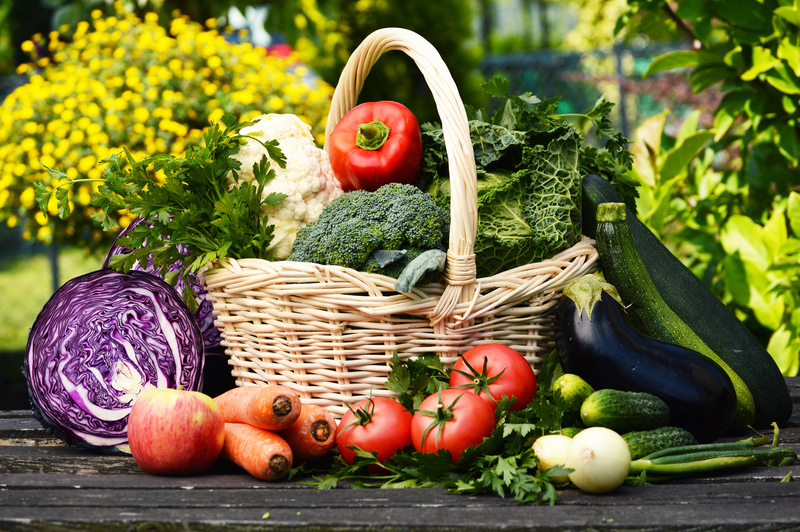Selecting Plants for Warmer Summers
Posted on 30/09/2024
With climate change causing temperatures to rise worldwide, selecting the right plants for increasingly warmer summers is essential for maintaining a healthy and vibrant garden. Elevated temperatures can stress plants, leading to wilting, reduced yields, and even plant death. However, by choosing heat-tolerant plant varieties and adopting appropriate gardening practices, you can ensure your garden thrives even in the hottest conditions.
Understanding Plant Heat Tolerance
Before diving into specific plant choices, it's crucial to understand what makes a plant heat-tolerant. Heat tolerance in plants involves several factors, including their ability to:
- Manage water efficiently
- Maintain cellular function at high temperatures
- Possess structural adaptations, such as thick leaves
Plants that are naturally adapted to desert or Mediterranean climates often exhibit these characteristics and are excellent choices for warmer gardens.

Annuals vs. Perennials: Making the Right Choice
When planning a garden for warmer summers, deciding between annuals and perennials is a critical step. Here's a breakdown to help guide your selection:
Annuals
Annual plants complete their life cycle within a single growing season, meaning they germinate, flower, set seed, and die within one year. They are often considered for their colorful blooms and quick growth. Some heat-tolerant annuals include:
- Marigold: Known for their bright, cheerful flowers and ability to thrive in full sun with minimal water.
- Zinnia: These drought-resistant plants come in various colors and can withstand high temperatures.
- Sunflower: Robust and relatively easy to grow, sunflowers are both heat and drought-tolerant.
Perennials
Perennials live for more than two years, coming back season after season. They are a great investment for sustained garden beauty. Some heat-loving perennials include:
- Sedum: This succulent retains water in its leaves, enabling it to survive droughts.
- Lantana: Resistant to both heat and drought, Lantana offers vibrant clusters of flowers.
- Lavender: Known for its fragrant flowers and resilience in hot, dry climates.
Succulents and Cacti: Natural Survivors
Succulents and cacti are prime candidates for hot climates due to their remarkable adaptations:
Succulents
These plants store water in their leaves, making them exceptionally drought-resistant. Popular heat-tolerant succulents include:
- Aloe Vera: Well-known for its medicinal properties, it is also heat and drought-resistant.
- Echeveria: These rosette-forming plants are both decorative and heat-tolerant.
- Agave: Featuring striking geometric forms, agaves are both heat and drought-resilient.
Cacti
Native to desert regions, cacti are designed to endure extreme heat and very little water. Popular choices include:
- Prickly Pear: Known for its edible fruits, this cactus is tolerant of high temperatures and poor soils.
- Saguaro: This iconic cactus can grow very tall and survives in extremely arid conditions.
- Barrel Cactus: With their rounded shape, these cacti can store a significant amount of water.
Edibles for Hot Climates: Growing Your Own Food
Cultivating a garden for warmer summers doesn't mean you have to forgo growing edibles. Several fruits and vegetables are well-suited for higher temperatures:
Vegetables
Tomatoes
Varieties like Roma, Celebrity, and Heatmaster can set fruit at higher temperatures.
Peppers
All types, from bell to hot peppers, are heat-loving plants that thrive in sunny conditions.
Okra
This vegetable loves high heat and is highly drought-resistant.
Eggplant
With its tropical origin, eggplant is well-suited for hot climates.
Fruits
Fig
Fig trees love heat and are very drought-resistant once established.
Citrus
Lemons, limes, and oranges do exceptionally well in warm climates.
Pomegranate
These trees are both heat and drought-tolerant, producing delicious, juicy fruits.
Ornamental Grasses: Adding Texture and Movement
Ornamental grasses can add an interesting texture and movement to your garden while being highly resilient to heat:
- Fountain Grass: This grass has a beautiful fountain-like shape and is heat-tolerant.
- Blue Fescue: Noted for its blue-tinted foliage, it does well in hot, dry conditions.
- Switchgrass: Native to North America, it can endure high heat and drought.

Implementing Best Practices for Heat Management
To maximize the performance of your heat-tolerant plants, consider adopting these best practices:
- Mulching: Mulch helps retain soil moisture and regulates ground temperature.
- Efficient Watering: Use drip irrigation to deliver water directly to the roots and reduce evaporation.
- Shade Structures: Implement temporary or permanent shade structures to protect sensitive plants during peak heat.
- Soil Amendments: Improve soil structure and water retention by incorporating organic matter.
Conclusion: Thriving Amidst Climate Challenges
As our climate continues to change, selecting the right plants for warmer summers is paramount to a successful garden. By opting for heat-tolerant varieties, including annuals, perennials, succulents, cacti, and even some edibles, you can create a lush, vibrant garden that withstands high temperatures. Alongside selecting suitable plants, employing best gardening practices ensures your garden remains healthy and productive. Embrace these strategies to adapt and thrive amid warmer summers.



